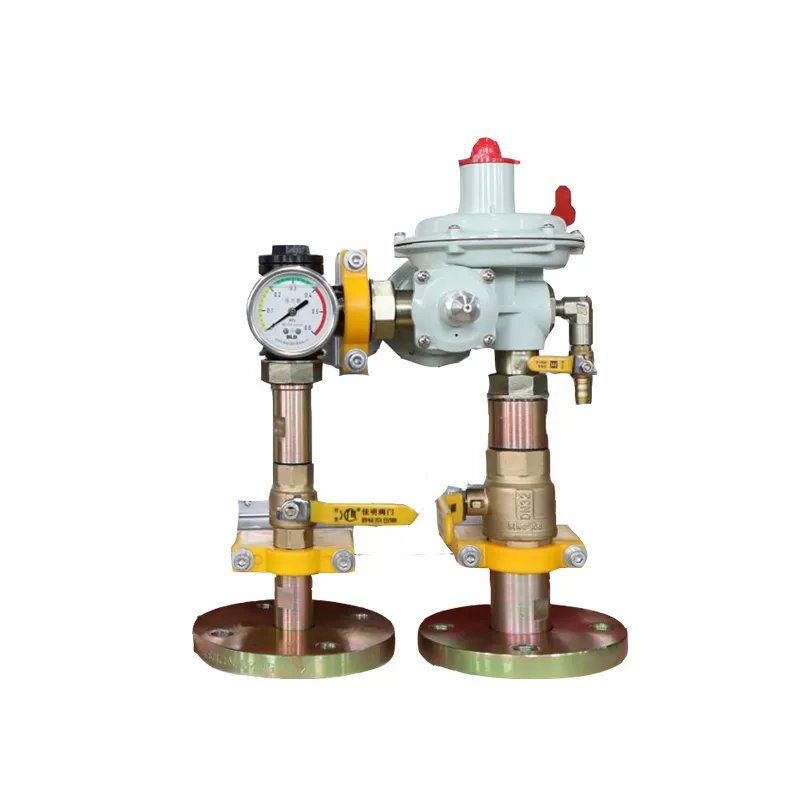
Dec . 12, 2024 10:08
Back to list
relief valve
The Importance of Relief Valves in Industrial Applications
Relief valves are crucial safety devices used in various industrial applications to prevent excessive pressure build-up in systems such as boilers, pressure vessels, and pipelines. Their primary function is to protect equipment and maintain safety standards by venting excess pressure, thereby preventing catastrophic failures and potential hazards. Understanding how relief valves work, their types, and their applications is essential for effective safety management in industrial environments.
Understanding Relief Valves
A relief valve is designed to open at a preset pressure and release fluid (gas or liquid) from a system, thereby alleviating excess pressure. Once the pressure decreases to a safe level, the valve automatically closes. This operation is critical because over-pressurization can lead to equipment failure, resulting in costly downtime and potential injury to personnel.
The most common types of relief valves include spring-loaded valves, pilot-operated valves, and balancing valves. Each type has specific applications depending on the pressure range, medium, and process requirements.
- Spring-loaded Relief Valves These are the most widely used type of relief valve
. They consist of a valve body with a spring that holds the valve closed until the pressure exceeds the set limit. When the pressure reaches the threshold, the spring compresses, allowing the valve to open and release excess pressure.- Pilot-operated Relief Valves These valves utilize a smaller pilot valve to control a larger main valve. They are typically used in applications requiring tight shut-off and can handle higher pressures and larger flow rates compared to spring-loaded valves.
- Balancing Relief Valves These are designed to maintain a constant pressure and are often used in hydraulic systems. They operate by balancing the pressure in the system, ensuring that it does not exceed a predetermined level.
relief valve

Applications of Relief Valves
Relief valves find applications in various industries, including oil and gas, chemical manufacturing, pharmaceuticals, and power generation. In these industries, the consequences of pressure build-up can be dire. For instance, in a boiler system, failing to release excess pressure may lead to an explosion, causing significant damage and risking lives.
In the oil and gas industry, relief valves are essential for maintaining safe drilling and extraction processes. They prevent pressure fluctuations that could lead to blowouts, thereby protecting equipment and personnel. Similarly, in chemical processing, these valves are crucial for maintaining safe operating conditions, preventing chemical spills, and avoiding hazardous reactions caused by pressure surges.
Importance of Regular Maintenance
While relief valves are vital for safety, they require regular maintenance and testing to ensure reliability. Factors such as corrosion, dirt, and wear can affect their performance over time. Routine inspections and maintenance schedules should be implemented to verify that relief valves are functioning correctly and can operate within safety limits.
Operators must be trained to understand the specific requirements for their equipment, including the appropriate settings and operational parameters for relief valves. Additionally, documenting inspections, repairs, and replacements can help track the performance of these safety devices and ensure compliance with industry regulations.
Conclusion
Relief valves are fundamental components in many industrial systems, providing critical safety functions by preventing over-pressure scenarios. Understanding the various types of relief valves, their applications, and the importance of maintenance is key to ensuring safe operations and protecting both personnel and equipment. By prioritizing the functionality and reliability of relief valves, industries can mitigate risks, enhance safety standards, and promote a culture of safety. In a world where operational efficiency must be balanced with safety, relief valves stand out as a simple yet effective solution to a complex problem.
Next:
Latest news
-
Safety Valve Spring-Loaded Design Overpressure ProtectionNewsJul.25,2025
-
Precision Voltage Regulator AC5 Accuracy Grade PerformanceNewsJul.25,2025
-
Natural Gas Pressure Regulating Skid Industrial Pipeline ApplicationsNewsJul.25,2025
-
Natural Gas Filter Stainless Steel Mesh Element DesignNewsJul.25,2025
-
Gas Pressure Regulator Valve Direct-Acting Spring-Loaded DesignNewsJul.25,2025
-
Decompression Equipment Multi-Stage Heat Exchange System DesignNewsJul.25,2025

